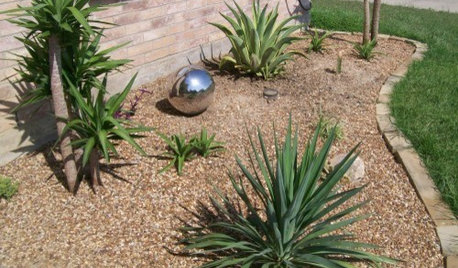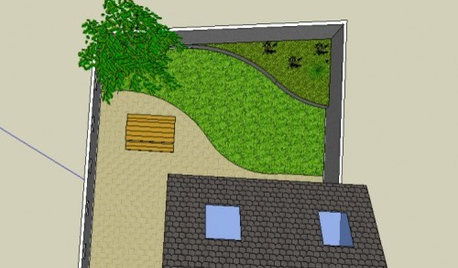Water Treatment Question
Chad_in_NC
11 years ago
Related Stories

GREEN BUILDINGConsidering Concrete Floors? 3 Green-Minded Questions to Ask
Learn what’s in your concrete and about sustainability to make a healthy choice for your home and the earth
Full Story
GARDENING GUIDESNo-Regret Plants: 5 Questions Smart Shoppers Ask
Quit wasting money and time at the garden center. This checklist will ensure that the plants you're eyeing will stick around in your yard
Full Story
Design Dilemmas: 4 Questions for Houzzers
Share Your Advice for a Low-Water Garden, Wet Bar, Family Room and Basement Spa!
Full Story

GREEN DECORATING8 Questions to Help You See Through Green Hype
With the ecofriendly bandwagon picking up some dubious passengers, here's how to tell truly green products and services from the imposters
Full Story
KITCHEN DESIGN9 Questions to Ask When Planning a Kitchen Pantry
Avoid blunders and get the storage space and layout you need by asking these questions before you begin
Full Story
REMODELING GUIDES13 Essential Questions to Ask Yourself Before Tackling a Renovation
No one knows you better than yourself, so to get the remodel you truly want, consider these questions first
Full Story
REMODELING GUIDESConsidering a Fixer-Upper? 15 Questions to Ask First
Learn about the hidden costs and treasures of older homes to avoid budget surprises and accidentally tossing valuable features
Full Story
MOVINGHiring a Home Inspector? Ask These 10 Questions
How to make sure the pro who performs your home inspection is properly qualified and insured, so you can protect your big investment
Full Story
WORKING WITH PROS12 Questions Your Interior Designer Should Ask You
The best decorators aren’t dictators — and they’re not mind readers either. To understand your tastes, they need this essential info
Full Story






User
Chad_in_NCOriginal Author
Related Professionals
North New Hyde Park Handyman · Sunrise Manor Kitchen & Bathroom Remodelers · Eureka Kitchen & Bathroom Remodelers · Folsom Kitchen & Bathroom Remodelers · Fort Myers Kitchen & Bathroom Remodelers · Galena Park Kitchen & Bathroom Remodelers · Lincoln Kitchen & Bathroom Remodelers · Londonderry Kitchen & Bathroom Remodelers · Mooresville Kitchen & Bathroom Remodelers · Ogden Kitchen & Bathroom Remodelers · Rolling Hills Estates Kitchen & Bathroom Remodelers · Roselle Kitchen & Bathroom Remodelers · Salinas Kitchen & Bathroom Remodelers · Vienna Kitchen & Bathroom Remodelers · Fairmont Kitchen & Bathroom RemodelersUser
User
Chad_in_NCOriginal Author
User
User
User
User
User
Chad_in_NCOriginal Author
User
User
Chad_in_NCOriginal Author
User
Chad_in_NCOriginal Author
User
alan_s_thefirst
User
Chad_in_NCOriginal Author